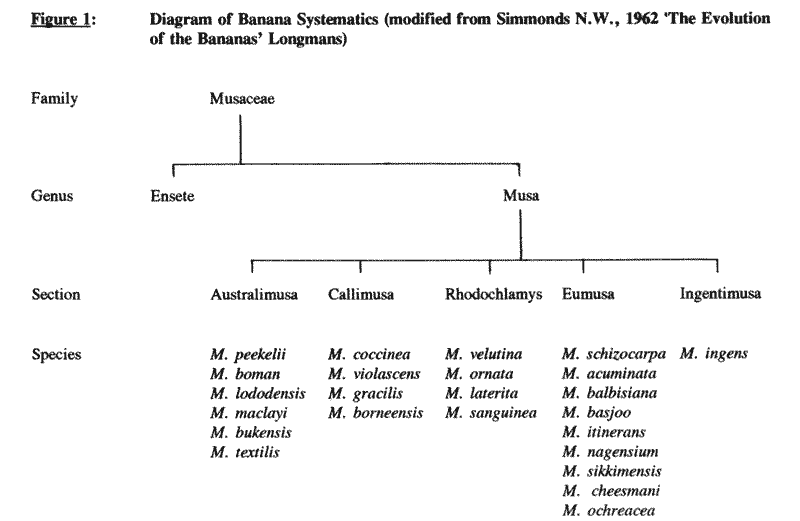
SEEDED ORNAMENTAL BANANAS - A DISEASE RISK
SCIENTIFIC NAME: Musa species
FAMILY: Musaceae
Ornamental banana plants are proclaimed as pests, and as such, they are illegal to grow in Queensland without special permission. The seeded banana types classed as 'ornamental' are a serious disease risk to our banana industry and are a potential weed, being plants that spread widely and rapidly.
The Cavendish banana, like most cultivated varieties, is seedless. The small pinhead 'seeds' are undeveloped ovules which cannot grow into plants. These types are propagated vegetatively using either suckers, bits of corms or tissue cultured plants.
Banana plants and fruit have a variety of uses, though over 95% of the banana farms in Australia grow the Cavendish type for local, fresh, ripe fruit. A wide range of banana types are in Australia, some are native but most have been introduced.
Ornamental bananas are Ensete ventricosum and all Musa spp. except those used to produce edible fruit and indigenous species.
The systematic position of the various bananas are shown in Figure 1. Varieties with edible fruits are mostly hybrids of Musa acuminata and Musa balbisiana in the section Eumusa. The edible Fe'i bananas of the South Pacific belong to the section Australimusa.
The seeded species usually grown for ornamental purposes overseas are Musa velutina, Musa ornata, Musa coccinea and Ensete spp. Ensete ventricosum is also a significant food source in Ethiopia, with the starchy core of the pseudostem being cooked, particularly during times of drought.
It is these ornamental species which are a major concern for the Australian banana industry. They, like the commercial varieties, are susceptible to the banana bunchy top virus disease which is spread by banana aphids and the movement of infected planting material. Bunchy top is a very serious disease which almost wiped out the banana industry in southern Queensland and NSW early this century. It was only by regular disease eradication and strict quarantine controlling the movement and planting of bananas that the industry survived.
If seeded ornamental bananas were to become established in Australia, the likelihood of spread of bunchy top and other serious diseases would be greatly increased. The task of disease eradication would also become a nightmare because of the large number of seeds produced by the ornamental bananas, their longevity as seeds in the soil of several years, so that they would remain as a potential pest and disease host for many years. The growing of seeded ornamental bananas is now prohibited by law in Queensland to help protect commercial and backyard bananas from the debilitating effects of serious pests and diseases. There is special exemption in the legislation for the growing of ornamental bananas for research, educational institution or botanic garden, provided a pest banana permit is obtained and safeguards are complied with to prevent seed dissemination.
You can help in this fight by notifying your local QDPI horticultural officer or banana inspector who will be able to assist in the eradication of any seeded ornamental bananas.

DATE: November 1991
* * * * * * * * * * * * *
